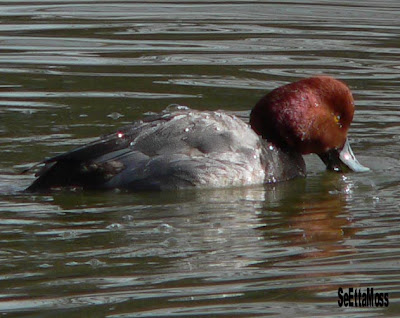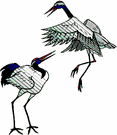A Snow Goose now in Canon City

Canon City is away from the flyway that brings Snow Geese through Colorado, that area is along the eastern plains including the Lamar area where the Snow Goose Festival was held. So it is remarkable event when a Snow, or a Ross', Goose turns up here. I was surprised to find a Snow Goose at the Centennial Park pond this morning. This is a city park with a lot of human activity but it draws semi-resident flocks of Mallards, American Wigeon and Canada Geese.
When I saw the goose I thought that it was as if one of the geese near Lamar had heard that the Canon City area was quite balmy so it followed me back. Of course, this doesn't really make any sense as these geese are accustomed to very cold weather and will soon be flying north as far as the Arctic, an area not exactly balmy even in the summer, to breed.
This is the goose in this photo. This goose is in Basic I plumage (an immature plumage in between juvenal and Definitive Basic plumage) with grayish on its head, neck and wings. The dark "grinning patch", which is one of the field marks that distinguish this species from the similar Ross' Goose, is evident in the photo.
Before I found the goose I had been to our Tunnel Drive area to see the Golden-crowned Sparrow. Indeed, I saw it and it only took a few minutes this time. And I saw it with the light in a good angle that showed the bright yellow on its crown.
SeEtta
Labels: "Snow Goose", Golden-crowned Sparrow.















































